Exploring an industry in flux — Brand Architecture, Beyond Beer and Reinvention
This piece was provided by CODO Design, a food and beverage branding firm. Join 5,500+ other beer industry pros who receive the Beer Branding Trends newsletter each month covering trends, currents and actionable advice from the front lines of beer branding.
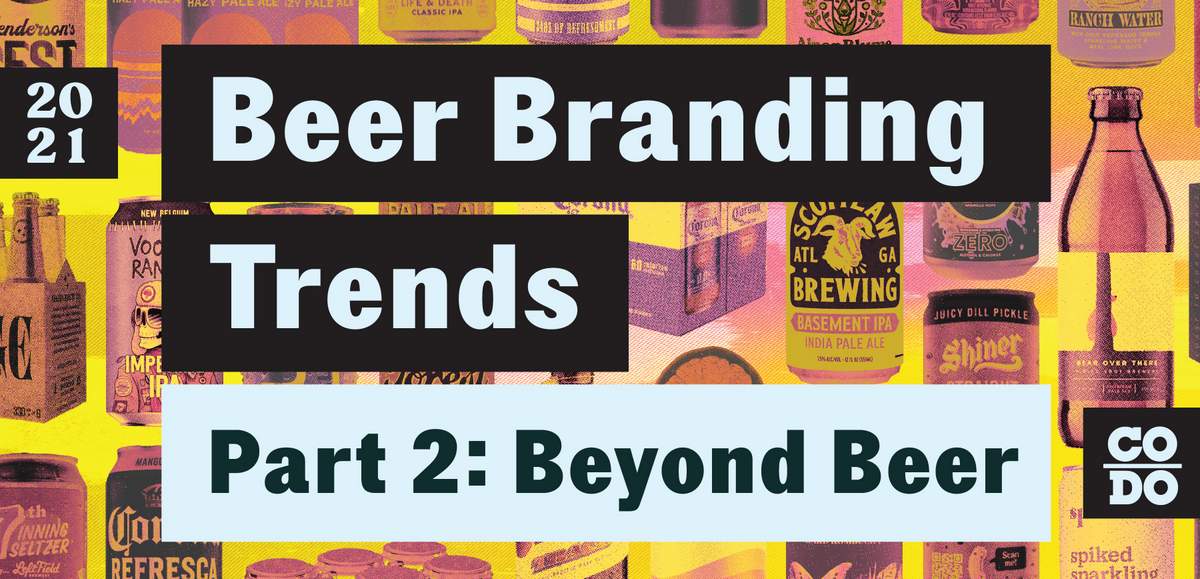
What is Beyond Beer?
Serving the omnibibulous consumer
Let’s start by getting in the weeds. Is hard kombucha a Beyond Beer offering? How about a startup ready to drink (RTD) cocktail brand? Or hard cider? Is it product-specific — anything that isn’t beer? Or, is it anything a beer drinker might drink that isn’t beer? Does it have to be alcoholic? Does it have to come from a brewery?
In the interest of creating a concrete definition, we think that a Beyond Beer product is any beverage a craft brewer produces that is not beer. So a hard kombucha brand isn’t a Beyond Beer product unless it’s produced by a brewery. Semantic? Very. But I think this is an important distinction when you’re thinking about the various product innovation and Brand Architecture moves your brewery can make. At a quick glance, this would include things like hard seltzer, RTD cocktails, flavored malt beverages (FMBs) and non-alcoholic (NA) offerings.
However you want to define it, Beyond Beer is no longer a catchy buzzword but a mindset that has been fully embraced by every corner of the industry. Late last year, Bart Watson, Chief Economist of the Brewers Association, reported that one-third of craft brewers (who responded to a Brewers Association survey) confirmed they were producing Beyond Beer products.
Why is this happening?
Millennials who drove the craft beer boom and newer entrants like Gen Z alike are more likely to be “omnibibulous” these days. (H/T to Bart for that fun moniker.) This means that while they still drink beer, they’re just as likely to enjoy other beverages throughout the week. That can be traditional wine, spirits and cider. And it can also include more recent emergent categories like hard kombucha, hard tea, canned coffee, canned RTD cocktails, CBD/THC beverages, seltzer and a wide array of non-alcoholic beverages.
How much runway are we talking here?
If you follow beer and beverage industry trade press, you might think that we’re already at peak saturation on this front. There’s no way we’ll see another splashy market release that jumps to a 15 share overnight. No more super-hyped collaborations, or celebrity endorsed energy/spirit/wine beverage brands.
But that may be a myopic view
I believe we’re still in the early stages of these blurred lines (or, the great “Convergence” as beer trade press has taken to calling it). Look to recent extensions like Topo Chico Hard Seltzer, an alcoholic Fresca extension, Simply Spiked Lemonade, Hard Mountain Dew, er, HARD MTN DEW, Rockstar Alcoholic Energy Drink (complete with 6.9% ABV, niiice), and an ever expanding list of Bud Light extensions. (How many extensions? Does anyone actually know?)
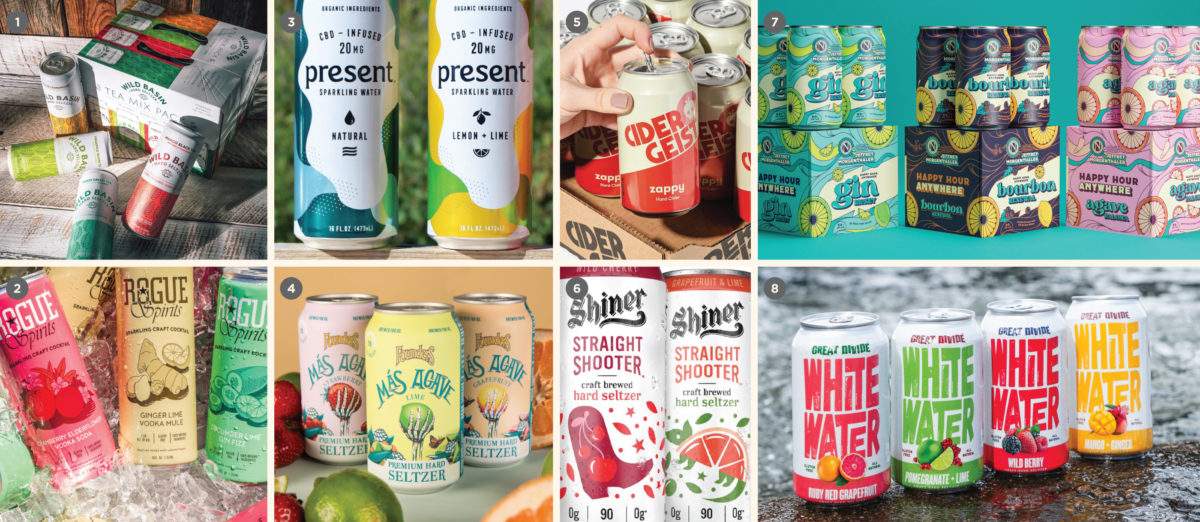
On this topic, I’m actually surprised Red Bull hasn’t launched a vodka RTD extension yet. And I will, for the third year in a row, publicly call out Faygo for not getting in the game. You’re leaving money on the table, folks. Whoop whoop.
There’s plenty of runway for breweries who are exploring opportunities within the Beyond Beer space. But the real room for continued growth (or at least, incremental growth) here will come from traditionally non-alcoholic beverage brands — soda companies, energy drinks, juice brands, coffee brands, water brands, milk brands(?) — extending into alcohol (or cannabis)-laden and/or functional offerings. The last few years have taught us that there are no rules stating that you have to stay within one category, so strap in for a wild ride on this front over the next five years.
How did we get here?
Hard seltzer was the perfect onramp for many of these larger beverage groups because it was a safe bet. It is (was?) trending, it’s not particularly hard to produce, and you can “seltzer-ize” an existing brand and product line much faster than you can create and launch a new brand from the ground up. But beyond that, seltzer has been a great ice breaker for many traditional non-alcoholic beverage brands because history and provenance just don’t seem to matter in this category. Hard seltzers are almost entirely differentiated by brand vs. actual product benefits or attributes.
If I can make a bold prediction, I foresee the vast majority of all breweries and Bev Alc brands offering products in multiple categories by 2030. I think consumer demand will continue to drive this, which will bring more people to the table, which will drive down the costs (and internal corporate hurdles) to get into these categories, and on and on.
For the craft brewer who may be on the fence about releasing a Beyond Beer product, look at it this way. Accept that you probably won’t be developing the next world beater brand. But you can make a great product that your fans enjoy while bolstering your overall portfolio for the long haul. Sprinkle in some seasonality, innovate, evaluate, listen to your customers, then refine, rinse and repeat.
Dayparting
Searching for new occasions
Dabbling in the Beyond Beer space opens up an entirely new world of possibilities for breweries to explore. For the last few years, this conversation has mostly centered around hard seltzer or RTD cocktail extensions. But one of the more interesting things we’ve seen our clients do over this period has been looking beyond that afternoon / evening occasion that traditionally suits alcohol to explore the rest of the day.
We’re calling this “dayparting.”
At a top line view, this trend perfectly follows other macro movements that are shaping the beer and beverage industry as a whole — functional beverages, lower calorie, zero sugar, low and no alcohol, cans (in general) and a deliberate move to own niche occasions (or, “micro-segmentation”).
A quick breakdown
• Energy in the morning: Coffee innovations, energy drinks, sparkling teas, (re)hydration & recovery via electrolytes
• Fuel in the afternoon: Protein, calories (meal replacements), natural energy, vitamins and minerals
• Winding down in the evening: Beer, spirits, and CBD / THC-infused beverages to help you ease into your night time routine
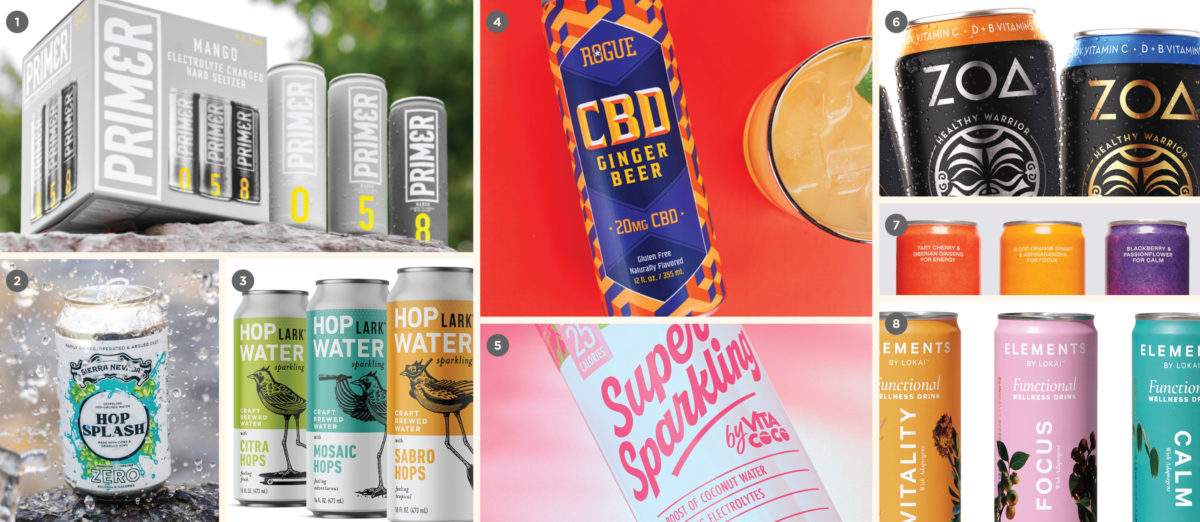
“Better for You” gets esoteric
It’s not a beverage, it’s a #Lifehack
Productivity culture and life hacks are alive and well in 2022 and this translates directly to the beverage industry. And this makes complete sense, doesn’t it? If you’re powering through hour two of your four-hour work week, you need everything to work for you. You need a beverage that’s as high leverage as you, baby.
Why just drink boring water after hill sprints when you can drink a kombucha with electrolytes? (or in my case, a High Life). Why bother eating (you’re probably fasting right now anyway) when you can skull a protein shake? And regular coffee is for the masses. Me, I’m microdosing mushroom coffee with a nootropic and super food-infused sparkling beverage chaser.
I jest a little here, but functional beverages are going to be a huge segment over the coming decade. It combines the macro trend of being health focused with niche consumer groups who are into buzzy emergent stuff like Adaptogens and Nootropics. And we’re early here, so the big land grabs are happening right now.
From a branding perspective, these sorts of beverages are going to find success by following one of the most important concepts in marketing, the Law of Category. E.g. This isn’t kombucha. It’s hard kombucha with adaptogens. This isn’t a hard seltzer. It’s hard seltzer with Vitamin C and electrolytes. This isn’t coffee. It’s mushroom coffee.
This space is constantly evolving, but we’re seeing a handful of the following ingredients popping up right now: Protein (derived from a variety of sources), Mushrooms (not shrooms, yet), Vitamin D and Zinc, polyphenols, Yerba Mate, Ashwaganda, Matcha, Allulose, Lychee and a variety of superfood/fruit, plant-based stuff.
I didn’t even bother to Google it, but I know that somewhere, someone is marketing a whiskey with adaptogens in it. Or, perhaps, an “adapto-gin?” And why not? The last several years have brought a litany of Postmodern oddities to beer — why should the broader Bev Alc industry be any different?
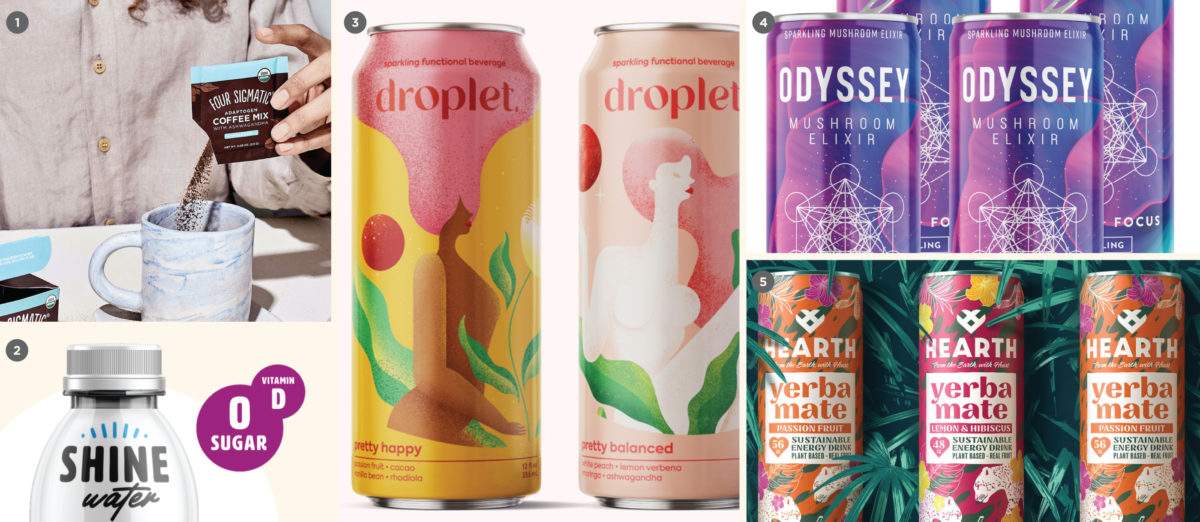
“Debits & Credits”
Functional goes mainstream
I’ve heard the metaphor of leading a “debits and credits” lifestyle — splurging and eating that big cheat meal or having that third beer one night a week — a “debit.” Earning a “credit” entails running a tight ship — eating clean, sleeping, and exercising the rest of the time. You know, all that rock and roll counterculture stuff.
This idea maps to the No & Low category in particular. How many consumers are looking for some mindful benefit from their beverages? How many of your customers want to protect their gains? Or be more present? Or just not be hungover all the time? This is an increasingly larger demographic that values product attributes like low-cal and low-carb, sugar free, gluten free, alcohol free and/or basically any other functional benefit you can dream up.
A quick note on non-alcoholic beer & beverages
Why No & Low has nothing but upside
Non-alcoholic (NA) beer is still a (very) small market within the broader United States beer industry (currently less than 1%), but it is growing. We covered NA beer at length in our 2021 beer branding trends review, but a new conversation we’re having with many of our clients now is how well alcohol-free products can do not just within their packaged portfolio but specifically in their on-premise mix.
If we can step back for a moment, it seems like society is finally over the stigma that was once associated with NA beer. But perhaps more importantly, the messaging surrounding this category has completely flipped.
In the past, if you were drinking a non-alcoholic beer, it was because you were a recovering alcoholic. It was an awkward scarlet letter. Now, it’s an opportunity to signal that you’re a health conscious and responsible adult. Drinking is no longer all or nothing. Why be on the wagon when you can be “Sober Curious.” From a branding and positioning (and social) standpoint, the destigmatization on NA beer is one of the most amazing aspects of this movement.
Athletic Brewing Cofounder Bill Shufelt has said that 80% of Athletic drinkers also drink alcohol through the week). This is entirely anecdotal, but I know half a dozen people who have started drinking NA offerings alongside beer. Whether as a pacer, or to earn a “credit” to offset one of their debits in the aforementioned metaphor. And I think this is where this segment’s growth will come from — not from a new surge of teetotalers who still need their Citra fix. But regular folks who are making healthier decisions.
Back to NA and on-premise for a moment — if you’re the designated driver for an evening, or if you’re not drinking for whatever reason and are around friends who are, your drink options have historically been limited. You could order water or soda. Or maybe a tonic or rudimentary mocktail. But these get old fast and you feel like the odd person out. NA options solve that.
And as NA beer and beverages become more refined, there’s an opportunity to be more deliberate with how we formulate these drinks and position them for on-premise consumption. By focusing on just a few extra considerations — certain taste cues (bitter, smoke, dry, sour) and formats (cans, some other novel container, or served in a proper glass) — you can make the drink, and person drinking it, feel more involved in the occasion.
This means your customers aren’t stuck ordering off the kids menu. And you can charge them more for it. Win-win.
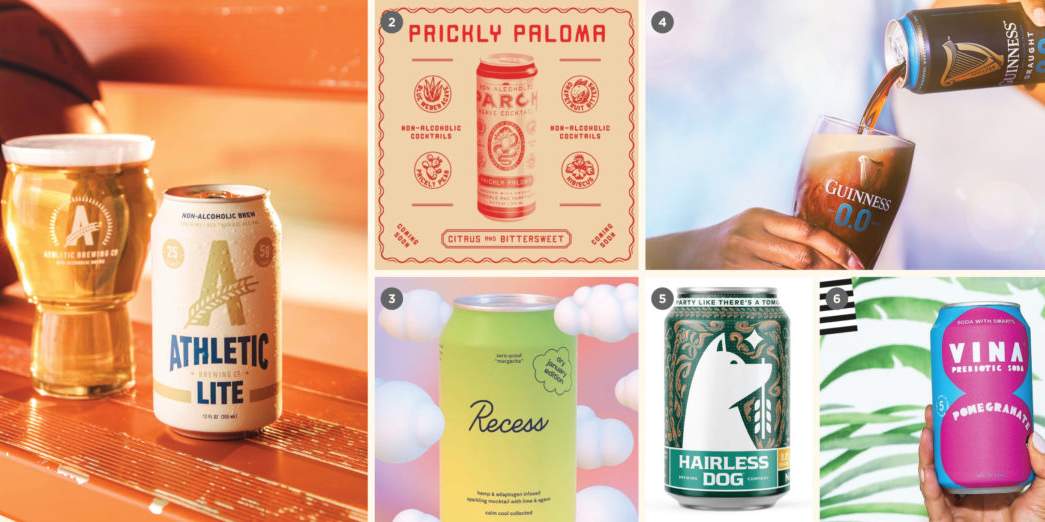
A few thoughts on hard seltzer
Opportunities for innovation and differentiation
I wanted to avoid an overly-long hard seltzer section in this piece, but we do still need to touch on it. Yes, RTDs are the hot new thing in beverage-land, but seltzer is still an important category (to the tune of $4.5 billion dollars in 2020 and capturing roughly ~10% of the beer market). And as the beer industry moves deeper into the Beyond Beer space, there are valuable lessons to be learned from hard seltzer that can be applied to your broader portfolio. In the interest of brevity, here’s a high level view of what we’re seeing at play from a branding perspective in hard seltzer today.
Premiumize your seltzer for differentiation
A craft brewery can never compete with Truly or White Claw on price. But this doesn’t mean that you can’t make a hard seltzer, or that your fans won’t want one. So how should a craft brewery brand, position and market a seltzer? Larger craft breweries may be able to grind it out in the volume game. For everyone else, you gotta go premium.
Moving forward, any brewery looking to effectively position a craft seltzer will need to use the same playbook (and category semiotics) that you’ve historically used to position craft beer itself.
Craft seltzer may have to become more regional and place-based (i.e. ranch water and even pickle brine seltzers down in Texas). It will have to adopt a non-pumpkin-spice-meme level of seasonality. And it will need to use more premium ingredients, perhaps moving closer to beer with hops and other familiar beer adjuncts (or any other category ingredients — coffee, apples, grapes, misc. fruit, etc.).
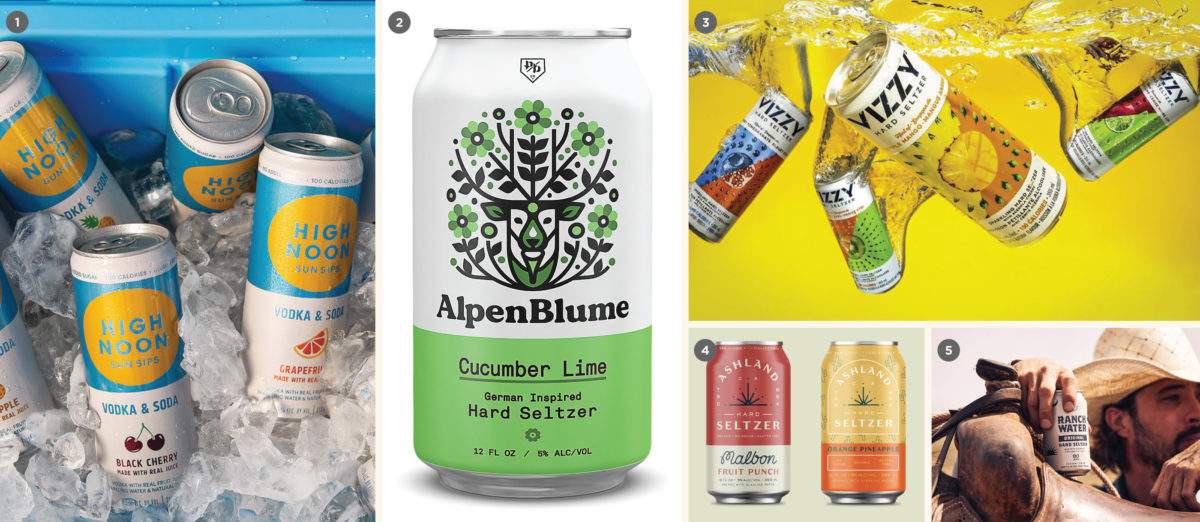
Using Categorical Differentiation to position your seltzer
Quick — think about hard seltzer packaging. What do you see?
I bet it’s something along the lines of a 12-oz slim can. It’s predominantly white with black typography (possibly run vertically) and a fruit illustration. The secondary pack is also mostly white and features all the cans across the front. It’s a variety pack (because it’s hard seltzer, after all).
Hard seltzer has a look — a clearly defined canon. And the vertical exploded so quickly that there was no time for consumer education along the way. Once White Claw tipped and became the cultural phenomenon that it is, everyone else had to react. And for competitors, this meant looking similarly enough visually that you register as belonging in the category, but just different enough to stand on your own.
To rise above this noise, let’s look at the hot new trend of flavor blasted(!!!) hard seltzer punches and lemonades.
This packaging is all bright and full color, with nary a mostly-white can in sight. But how can this be? How will people know these are hard seltzers if they don’t look like hard seltzer? Aside from speaking to a specific product attribute (e.g. Welcome to Flavor Town®, baby!), how can they pull this off?
This works because these are not hard seltzers. At least not in the way that the category has come to be defined. By having a different functional benefit (e.g. full flavor without all the carbs), and different emotional benefits (e.g. I can indulge without ruining my diet), these are essentially a new category.
They are not hard seltzers. They are hard seltzer punch. Or hard seltzer lemonade. Or hard seltzer tea. And this means they are not bound by the visual vocabulary and category rules of hard seltzer, proper.
The point I’m trying to make here, is that by understanding seltzer’s broader visual vocabulary and category rules, you will have a framework for working within, and around, depending on your communication and positioning goals. You can make something different, just for the fun of it, for the wit and surprise and delight that it brings. Or, you can get strategic and create a new category to bypass all of those rules in the first place.
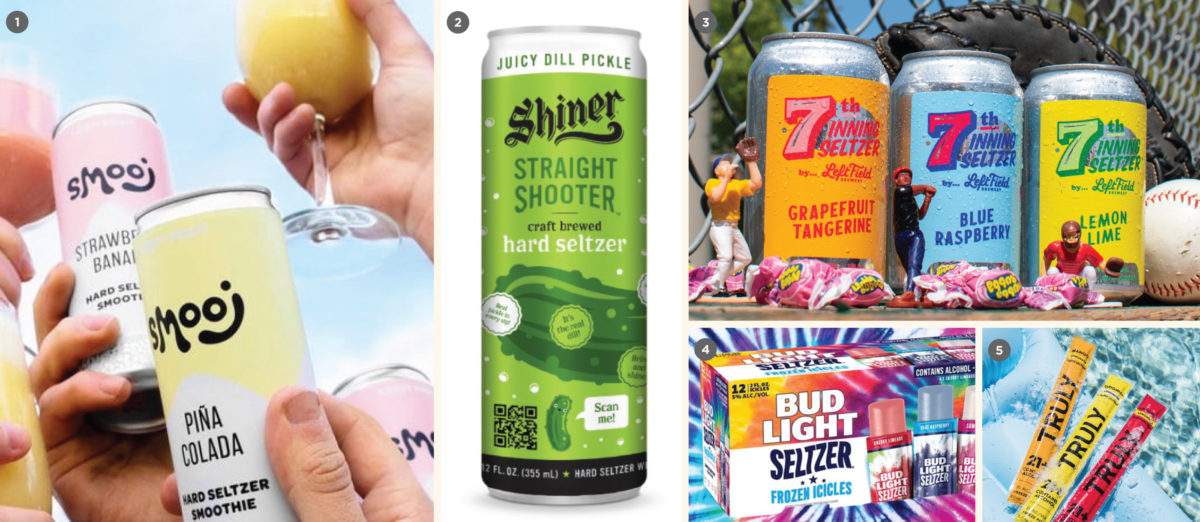
How can you “seltzer-ize” other categories?
Let’s stay on the hard seltzer canon for a moment. There are a handful of attributes that define the seltzer category. These include being around 100 calories, sugar free, gluten free, ~5% ABV, varying levels of fruit flavor, “clean” labels, canned (usually in 12-oz slims) and offered in variety packs.
These track nicely with the Better for You segment, but I think these attributes can carry over to other beverage categories to spur growth.
Hard cider is a category that could use these attributes as a shot in the arm (this could be hugely valuable to recruiting new drinkers who have misguided views of cider as a whole). Canned wine is a natural fit. And even canned coffee could use some of these same descriptions and value props to gain traction.
A more nuanced takeaway is that you can borrow whatever language suits your brand and positioning goals so long as it’s all legal and above board from a compliance standpoint. For example: a hard coffee could be positioned more like a hard seltzer by touting that it is sparkling, or low sugar, or gluten free, etc. This could open up a new occasion (afternoon, etc.) for coffee that people may otherwise have a hard time getting over.
It may be worthwhile for your brewery to see if there are any beverages in your portfolio (or pipeline) that could benefit from borrowing some of the attributes and value props that drives someone to drink seltzer. There could be a great opportunity to reposition a brand or two.
Read the rest of this post over on CODO’s site.
Join CODO’s Beer Branding Trends newsletter for monthly field notes covering trends, currents and actionable advice from the front lines of beer branding.

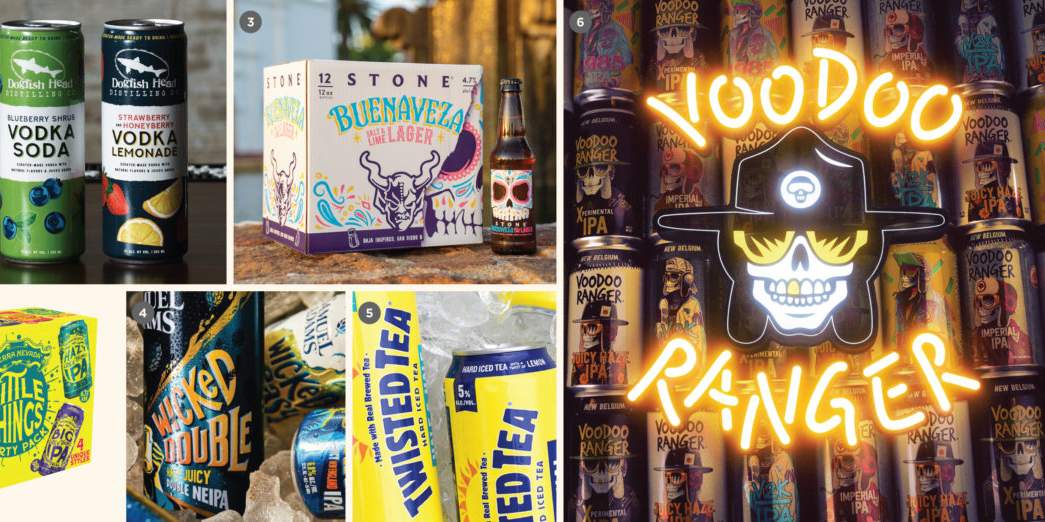
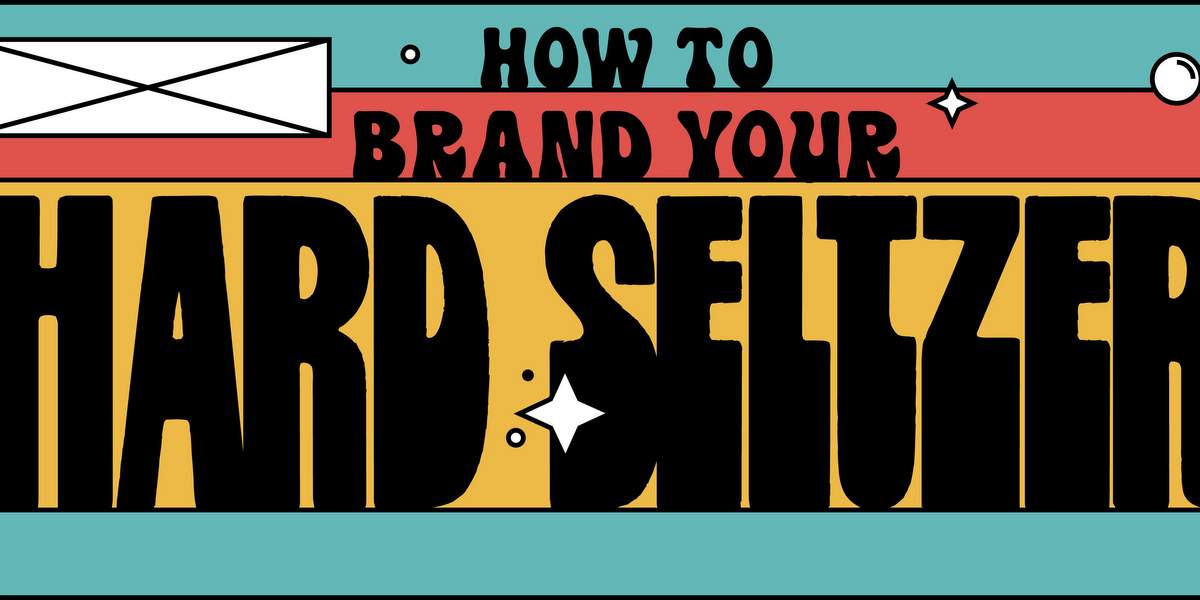
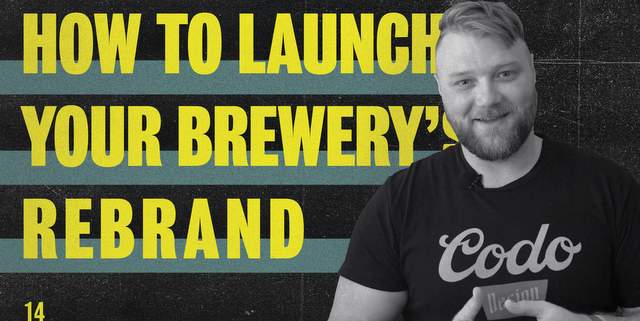
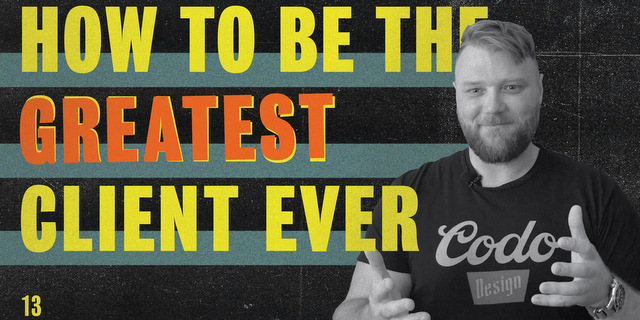
Leave a Reply
You must be logged in to post a comment.